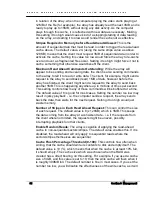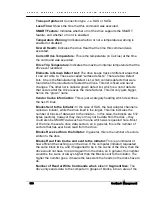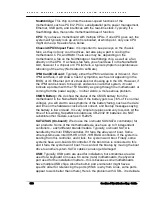
G A L A X Y ® A U R O U R A C O N F I G U R A T I O N A N D S Y S T E M I N T E G R A T I O N G U I D E
102
Section 3 Management
Definition of log entries:
‘read’ row is showing numbers relating to reads.
‘write’ row shows numbers relating to writes. Most of the write row will always
be 0, because this particular drive does what are called blind writes (i.e. Isn't
capable of detecting errors on writes without a verify or read)
‘verify’ row shows numbers relating to verifies (which are writes followed by
reads to check the data).
The first two columns are errors corrected by ECC (Error Correction and
Control). With ECC extra bits are sent with the data which provide parity for
the data. If the parity doesn't match the data, it is corrected by the processor
on the drive. The third column shows errors which were corrected by rereads
(Where the drive had to reread the sector to get the data), or rewrites (Where
the drive had to write the sector more than once, based on a verify failure).
The forth column shows the total numbers of errors corrected (i.e. The sum of
the first three columns). The fifth column shows how many times it had to call
the error correction algorithms (whether or not the errors were corrected) –
kind of also like a sum of the first three columns. The sixth column indicates
how many Gigabytes have passed through the error-checking algorithm. In
this case, a little over 8.3TB was processed. Finally, the right column is
number of errors which could not be corrected either with ECC or with
rereads/rewrites.
The final two lines are: GLTSD, which records multiple test results (it should
be disabled), and finally, the long (extended) self-test duration, which indicates
the amount of time in seconds and minutes that it took the last time it ran the
long self-test. This is a good indicator of how long futures tests would take to
run. In the example, the test took about 63 minutes to run, which is very good
for a 1TB SAS drive.
The following is a sample output of the SMART command from a SAS data
drive:
















































